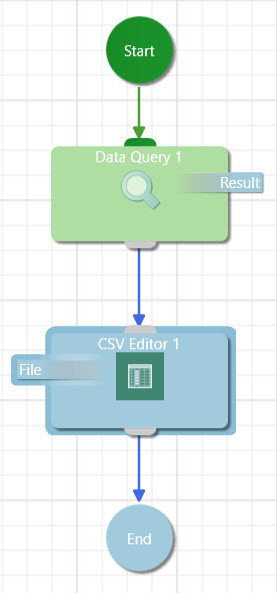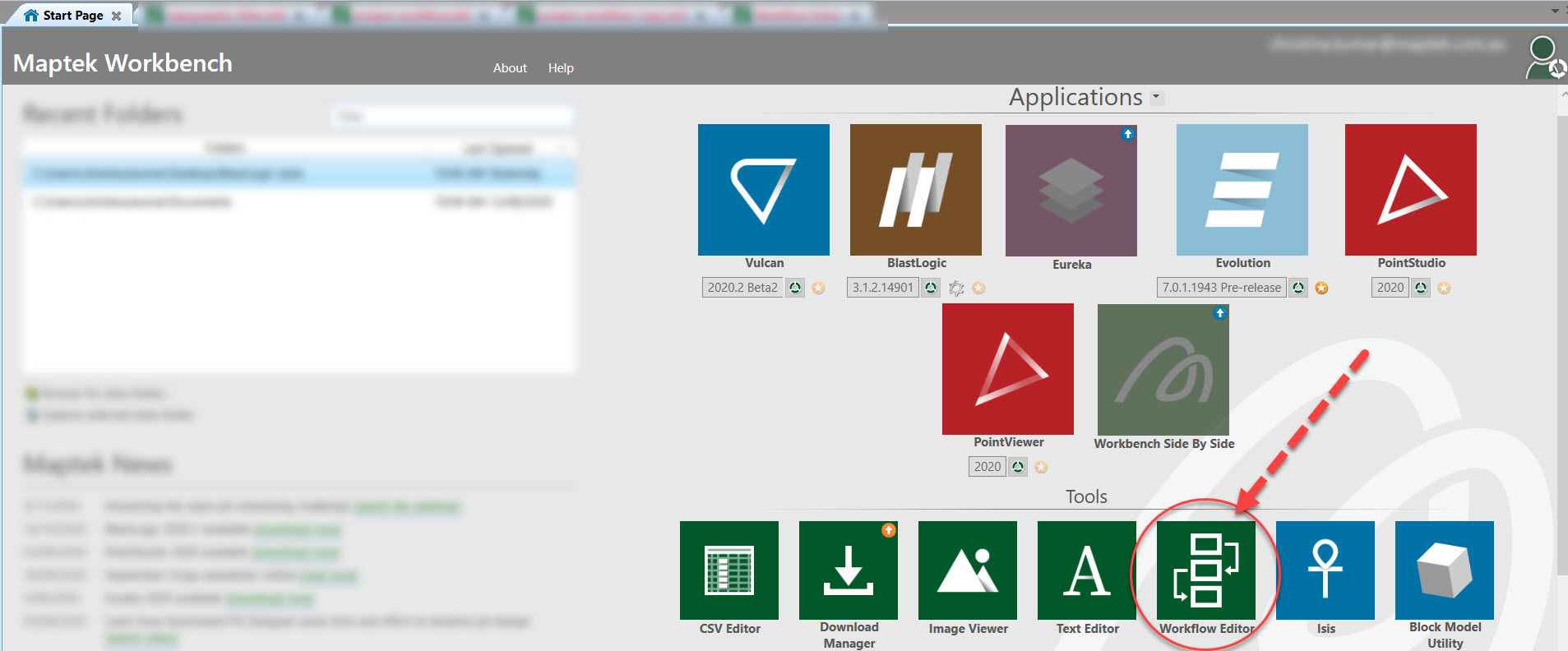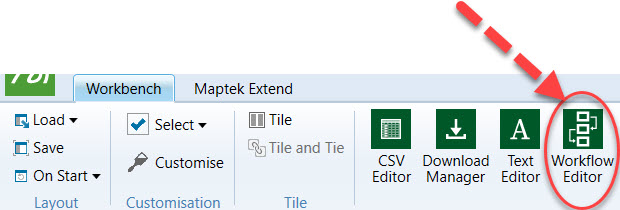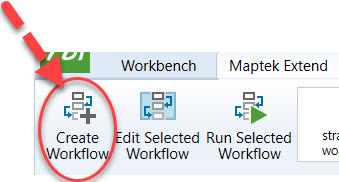Overview
The Workflow Editor is a tool in the Maptek Workbench that allows users to design, save and run automated software procedures called workflows.
A workflow is a series of high-level instructions that converts a number of user inputs into a specified output. A workflow can run commands from a range of applications in the Workbench including Maptek Vulcan and Maptek PointStudio.
A workflow diagram is a visual representation of a workflow that resembles a flowchart. It consists of a series of components connected by arrows indicating the sequence of execution and the flow of data.

Workflows may be fully automated, or may consist of a combination of manual and automated steps.
Why use workflows
The Workflow Editor has a number of advantages to offer:
-
Automation of a sequence of steps
-
Alternate paths of execution based on user input (decision-making ability)
-
Integration with multiple Maptek applications
-
Python integration for customised behaviour
The following are examples of procedures that can be automated using workflows:
-
Filtering and modelling scans in PointStudio
-
Performing global registration of scans in PointStudio
-
Creating a surface for drill and blast analysis in BlastLogic
-
Relimiting triangulations in Vulcan
-
Converting grids to triangulations in Vulcan
-
Performing a Min/Max operation on a set of surfaces in Vulcan
-
Reading and writing data to spreadsheet files
Where to access the Workflow Editor
The Workflow Editor comes installed with the Workbench and can be accessed with a license to Maptek Extend. It can be opened from the start page, from the Workbench ribbon menu or from the Maptek Extend ribbon menu as shown below.



Next topic: Getting started - Key concepts - Workflow diagrams